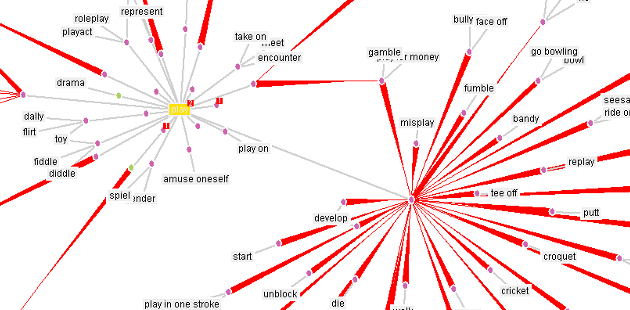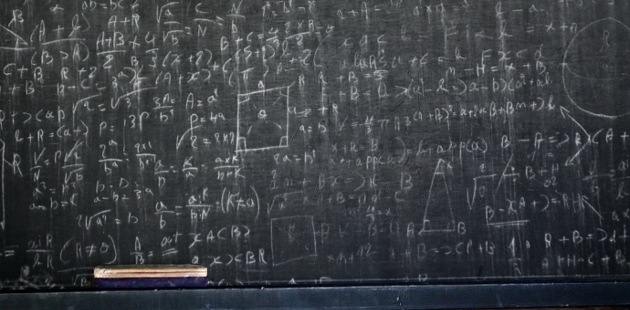Automatic language correction
IA161 NLP in Practice Course, Course Guarantee: Aleš Horák
Prepared by: Aleš Horák, Ján Švec
State of the Art
Language correction nowadays has many potential applications with large amounts of informal and unedited text generated online: web forums, tweets, blogs, or emails. Automatic language correction can include several tasks: spell checking, grammar checking and word completion.
In the theoretical lesson, we will introduce and compare various methods to automatically propose and choose a correction for an incorrectly written word. Spell checking is the process of detecting and sometimes providing spelling suggestions for incorrectly spelled words in a text. The lesson will also focus on grammatical checking problems, which are the most difficult and complex type of language errors, because grammar is made up of a very extensive number of rules and exceptions. We will also say a few words about word completion.
The lesson will also answer a question "How difficult it is to develop a spell-checker?" and present a tool that performs spell-checking and autocorrection.
References
- Gupta, Prabhakar. "A context-sensitive real-time Spell Checker with language adaptability." 2020 IEEE 14th International Conference on Semantic Computing (ICSC). IEEE, 2020. link
- Rothe, Sascha, et al. "A simple recipe for multilingual grammatical error correction." ACL-IJCNLP 2021. link
- Didenko, Bohdan, and Andrii Sameliuk. "RedPenNet for Grammatical Error Correction: Outputs to Tokens, Attentions to Spans." Proceedings of the Second Ukrainian Natural Language Processing Workshop (UNLP). 2023. link
- Náplava, Jakub, et al. "Czech grammar error correction with a large and diverse corpus." Transactions of the Association for Computational Linguistics 10 (2022): 452-467. link
Practical Session
Note: If you are new to the command line interface via a terminal window, you may find the tutorial for working in terminal useful.
There are 2 tasks, you may choose one or both:
Task 1: Statistical spell checker for English
In the theoretical lesson, we have become acquainted with various approaches how spelling correctors work. Now we will get to know how a simple spellchecker based on edit distance works.
The example is based on Peter Norvig's Spelling Corrector in Python. The spelling corrector will be trained with a large text file consisting of about one million words.
We will test this tool with prepared data. Your goal will be to enhance the spellchecker's accuracy.
- Download task_ia161-spell.zip with a prepared script
spell.pyand a training data collectionbig.txt. Unzip it and change to the contained directory.wget https://nlp.fi.muni.cz/trac/research/chrome/site/bigdata/task_ia161-spell.zip unzip task_ia161-spell.zip cd task_ia161-spell
- Test the script by running
python spell.py
- Open
spell.pyin your favourite editor and we will walk through its functionality.
Spellchecker functionality with examples
- Spellchecker is trained from file
big.txtwhich is a concatenation of several public domain books from Project Gutenberg and lists of most frequent words from Wiktionary and the British National Corpus. Functiontrainstores how many times each word occurs in the text file.NWORDS[w]holds a count of how many times the word w has been seen.def words(text): return re.findall('[a-z]+', text.lower()) def train(features): model = collections.defaultdict(lambda: 1) for f in features: model[f] += 1 return model NWORDS = train(words(file('big.txt').read())) - Edit distance 1 is represented as function
edits1- it represents deletion (remove one letter), transposition (swap adjacent letters), alteration (change one letter to another), or an insertion (add a letter). For a word of length n, there will be n deletions, n-1 transpositions, 26n alterations, and 26(n+1) insertions, for a total of 54n+25. Example:len(edits1('something')) = 494words.def edits1(word): splits = [(word[:i], word[i:]) for i in range(len(word) + 1)] deletes = [a + b[1:] for a, b in splits if b] transposes = [a + b[1] + b[0] + b[2:] for a, b in splits if len(b)>1] replaces = [a + c + b[1:] for a, b in splits for c in alphabet if b] inserts = [a + c + b for a, b in splits for c in alphabet] return set(deletes + transposes + replaces + inserts)
- Edit distance 2 (
edits2) - appliesedits1()to all the results ofedits1(). Example:len(edits2('something')) = 114 324words, which is a high number. To enhance speed we can only keep the candidates that are actually known words (known_edits2()). Nowknown_edits2('something')is a set of just 4 words:{'smoothing', 'seething', 'something', 'soothing'}. - The function
correct()chooses as the set of candidate words the set with the shortest edit distance to the original word.def known(words): return set(w for w in words if w in NWORDS) def correct(word): candidates = known([word]) or known(edits1(word)) or \ known_edits2(word) or [word] return max(candidates, key=NWORDS.get) - For evaluation there are two test sets prepared - development(
test1) and final test set(test2).
Task 1
- Create a text file named
spell.txt.
- Run
spell.pywith development and final test sets (tests1andtests2within the script), write the results inspell.txt.
- Explain the given results in few words and write it in
spell.txt.
- Modify the code of
spell.pyto increase accuracy (pct) attests2by 10 %. You may take an inspiration from the Future work section of the Norvig's article. Describe your changes and write your new accuracy results tospell.txt.
- Upload
spell.txtand the editedspell.pyto the homework vault (odevzdávárna).
Task 2: Rule based grammar checker (punctuation) for Czech
The second task choice consists in adapting specific syntactic grammar of Czech to improve the results of punctuation detection, i.e. placement of commas in the requested position in a sentence.
Task 2
- login to asteria04:
ssh asteria04 - download task_ia161-grammar.zip containing:
punct.set, the syntactic grammar for punctuation detection for the SET parsertest-nopunct.txt- testing text with no commaseval-gold.txt- evaluation text with correct punctuationevalpunct_robust.py- evaluation script which computes recall and precision with both textswget https://nlp.fi.muni.cz/trac/research/chrome/site/bigdata/task_ia161-grammar.zip unzip task_ia161-grammar.zip cd task_ia161-grammar
- run the parser to fill punctuation to the testing text
cat test-nopunct.txt | sed 's/^\s*$/<\/s><s>/' \ | /nlp/projekty/set/unitok.py \ | /nlp/projekty/rule_ind/stat/desamb.utf8.majka.sh -skipdis \ | /nlp/projekty/set/set/set.py --commas --grammar=punct.set \ > test.txtIt takes several seconds to finish, nothing is printed. Output is stored intest.txt. - evaluate the result
python evalpunct_robust.py eval-gold.txt test.txt > results.txt; \ cat results.txt
- edit the grammar
punct.setand add 1-2 rules to increase the F-score (combined recall and precision) of 10%. You may consult e.g. the comma rules at LocalLingo.
You may need to go through general information about the SET grammar format. Information about adapting the grammar for the task of punctuation detection can be found the this published paper.
Current best results achieved with an extended grammar are 91.2 % of precision and 55 % recall, i.e. F-score of 68.6 %.
- upload the modified
punct.setand the respectiveresults.txt.
Do not forget to upload your resulting files to the homework vault (odevzdávárna).







